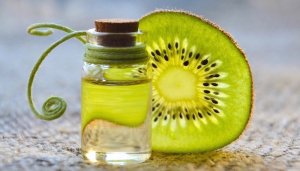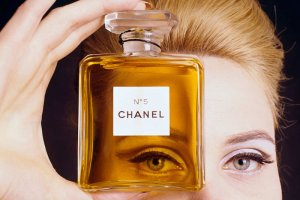Synthetic fragrances compete in the global perfume market place with all the rivalry of sparring siblings. Instead of vying for parental attention, however, the focus is on which is preferred by consumers, lasts longer, costs less etc.
The issue of lower cost always makes synthetic the winner because pure compounds are often labor-intensive and more expensive to come by. Still, the fight rages, as almost all quality fragrances made by leading perfumers contain a percentage of both.
An Overview Of The Current Perfume Marketplace
The global market for fragrances and perfumes is projected to reach US $51 billion by the year 2022. This very specific market is measured by the compound annual growth rate (CAGR). This standard is particularly effective because it measures economic growth over multiple time periods.
Experts believe industry growth is driven by a number of factors. These include: the rising demands for perfumes among millennials; the increase in personal toilette for both men and women; accelerated consumer spending on personal and beauty care products and the growing awareness that scents greatly enhance personal mood and well being.
With a projected annual increase of 5.9% from 2016 until 2026, the natural or pure perfume sector accounts for 19% of the total value share for 2016 and is expected to reach a CAGR of 7.9% over this same period of time.

According to Statistic Brain, 4 out of every 5 women in the United States use perfume on a regular basis. North America is the largest global geographic segment for the fragrance industry, accounting for 34% of all revenues.
Europe is the second-largest sector with 30% of industry sales. South America and the Middle East are burgeoning markets claiming 6% of industry sales respectively.
What Are Synthetic Fragrances?
A synthetic fragrance is one that is comprised primarily of artificial compounds and materials. The majority of these amalgams belong to a class of substances known as petrochemicals.
Synthetic fragrances often last a lot longer than pure perfumes and are generally more pronounced due to the potent fixatives they contain. These aid in balancing the volatile nature of some ingredients, increasing their holding power.
Synthetic fragrances are laboratory creations, and while it may not be common knowledge, they comprise almost two-third’s of the most popular scents we create and other perfume manufactures that are used in perfumes and other scented products.
There are basically three diverse types of synthetic fragrances. They are: full synthetics, which means they are almost entirely comprised on petroleum by-products; semi-synthetics also known as natural fragrances, which have been transformed via artificial means and natural isolates, which belong somewhere in between natural and synthetic because laboratories develop them by cutting off one scent from a more complex aroma base, such as that of a red rose.
Pure Organic And Natural Fragrances
Aromatic compounds created from Mother Nature’s endless bounty have been integral to mental, spiritual and physical healing in the form of aromatherapy since the beginning of recorded history.
This is a natural treatment for healing a person’s mind, body and soul known and practiced for centuries by many ancient civilizations, including Egypt, China and India.

A pure perfume is any fragrance derived completely from minimally processed natural materials, without any artificial or synthetic components. In order to meet the criteria, this fragrance must contain only pure essential oils obtained from raw fruits, flowers, herbs, leaves, seeds, roots and woods via steam distillation or water.
The tenacity of a pure perfume is totally dependent on the molecular configuration of the oils selected. This can cause variations in how long a fragrance can maintain itself. Pure perfume can be compared to a bouquet of diverse blooms.
One fragrance may only last for a few hours and others could still be discernible days after the initial application. Some of the more popular natural oils used in the personal care industry include: almond; jojoba; coconut; grape-seed; geranium; lavender; olive oil (ultimate hair conditioner); rosehips oil (nail-care); coconut (skin moisturizer) and eucalyptus.
Pure scents are inconsistent in character, as some last longer and are more discernable than others. It is, perhaps, this fact that accounts for the belief that while pure perfumes may be lovely, they are short-lived. Resins from myrrh and frankincense, as well as animal byproducts, such as whale ambergris and musk from a musk deer are all natural fixatives, but today they are hardly if ever used because their extraction entails the death of the animal.
Natural Fragrances
Natural scents are not so clearly delineated, as there is no legal definition of the term ‘natural’. This has relative meaning and can be translated to indicate a skincare product MIGHT contain both natural and synthetic ingredients with the majority being chemical in origin.
Natural fragrances are complex creations usually comprised of aromatic raw materials such as essential oils, fractions of essential oils, isolates, exudates such as resins, distillates, extracts and volatile concentrates. Natural fragrances are not always organic but organic fragrances are always natural.
Pure essential oils are always present in any natural perfume. Extracted from raw fruits, flowers, herbs, leaves, seeds, roots and woods, these oils are usually blended with a soy or bee’s wax to create a dense fragrance. Energetic, emotional, and physical healing properties are often associated with natural fragrances.
Organic Fragrances
Organic scents are derived from living matter and are defined as those that are grown and processed under highly controlled conditions that guarantee materials are free from pesticides, heavy metals and synthetic fertilizers. The United States Department of Agriculture (USDA) certifies perfumes as organic and People For The Ethical Treatment of Animals (PETA) certifies that they are vegan.
The Benefits of Synthetic Fragrances
While the word, ‘natural’ written across the label on any product is likely to connect consumers with concepts like healthy and even better, in all fairness, this is not always the case. In addition to the killing of whales and forest animals for the sake of fragrance, substantial deforestation has resulted from the production of natural oils, such as sandalwood and rosewood.
Synthetic perfumes are richer and more intense than natural aromas. They are also more versatile in composition than natural varieties, which are always limited to florals, musks and botanicals. They can be created in a laboratory with one singe molecule and blended with essential oils to create an endless spectrum of fragrances.
Love synthetic fragrances or not, the world’s most iconic fragrance, Chanel #5, would never have been created without the use of a new category of synthetic fragrance materials known as aroma aldehydes, which provide that famous sparkling fresh top note, often imitated by newer creations.

Synthetic Fragrances For Personal Care Products
While many consumers prefer their cosmetics to contain natural scents, for many, the risk of allergies and skin sensitivities make it not always feasible to produce cosmetics that are comprised of completely natural ingredients.
Due to the fact that natural ingredients are also not known for their ability to blend well with other fragrances, synthetic aromas have their valued place within the perfume industry especially among industry leaders such as Alpha Aromatics.
Synthetic Fragrance Oils
Basically, there are two types of synthetic fragrance oils. They are: Typical fragrance oils and Nature-Identical fragrance oils. The former are less expensive, greatly diverse and use scent binders such a phthalates, which aid in scent duration.
Our chemists can perform magical alchemy and produce via chemical reactions distinctive and memorable fragrances that do not exist in nature.
Natural-Identical oils are derived entirely from synthetic substances. The only difference between the two is that the Natural-Identical oil is always chemically identical to an essential oil counterpart existing in nature.
The Enduring Popularity of Synthetic Fragrances
The question of why synthetic scents are so popular has an answer that is manifold. They are much less expensive; they have a consistency; they offer more diversity; their scent lasts for longer periods of time and last but not least, the manufacture is much easier.
As an example of the cost variable, rose essential oil can run anywhere from $300 to $800 per ounce compared to a synthetic version of about $3.50 per ounce. Consumers demand and expect consistency in their cosmetic and personal care products and synthetic scents deliver every time.
Synthetic fragrances are robust, intense and durable. There is a greater variety of blends within the synthetic realm as some scents, like lily and lilac, cannot be extracted from flowers. These and many others can be easily manufactured either as totally synthetic fragrances or as blends of both synthetic and natural oils.
Alpha Aromatics And Synthetic Fragrances
The perfume industry uses and combines more than 3,100 synthetic scent compounds, with the average name-brand perfume containing 29 chemicals. Master perfumers always have an olfactory goal in mind, and the careful selection of essential oils always initiates the birth of a new fragrance.
Our chief perfumers understand the power of fragrance and have been creating fine perfumes since the 1940s. There is no substitute for more than seven decades of hands-on experience, and their many years of continuous operation have served to hone their level of expertise to unparalleled levels within the perfume industry.
Adept at translating any company’s vision into a fragrance that will both attract and engage customers, we understand the subtle mechanics of ambient marketing. Our cutting edge technologies and meticulous research conducted in their 85,000-square-foot Technology Center equipped with the latest advances in industrial science lie at the heart of our enduring success and consistent state of innovation. These include: gas chromatography, mass spectrometry, head-space analysis, distillation, extraction and quality control technology.
Our compositions are used for a myriad of purposes including but not limited to: superior quality perfumes; scent branding; personal care products; candles and diffusers and fragrances for home products.
According to Roger Howell (pictured below), our chief perfumer vice president, “We drive the scent trends that guide product branding for a wide range of clients in the personal care, household cleaning, and institutional industries… We know how important branding is for the continued growth of our clients’ product lines, and we pride ourselves on building scents that build great brands.”

In Conclusion
If you’re a brand owner or purchaser, senior chemist, product developer, business development manager, packaging technologist or product development scientist, submit an inquiry today for professional advice on your next synthetic scent, be it for your company environment or for your choices in the products you may manufacture.
Final thought on synthetics: There’s so much plastic in this culture that vinyl leopard skin is becoming an endangered synthetic. ~ Lily Tomlin
This article was created with the insight and specific direction of our chief perfumer, Roger Howell, our President and CEO, Arnold Zlotnik, and our other senior Alpha management and staff. Learn more about our company’s history, our degreed, credentialed perfumers and quality control staff as well as the passion we place behind every fragrance we design.
 alpha aromatics®
alpha aromatics®